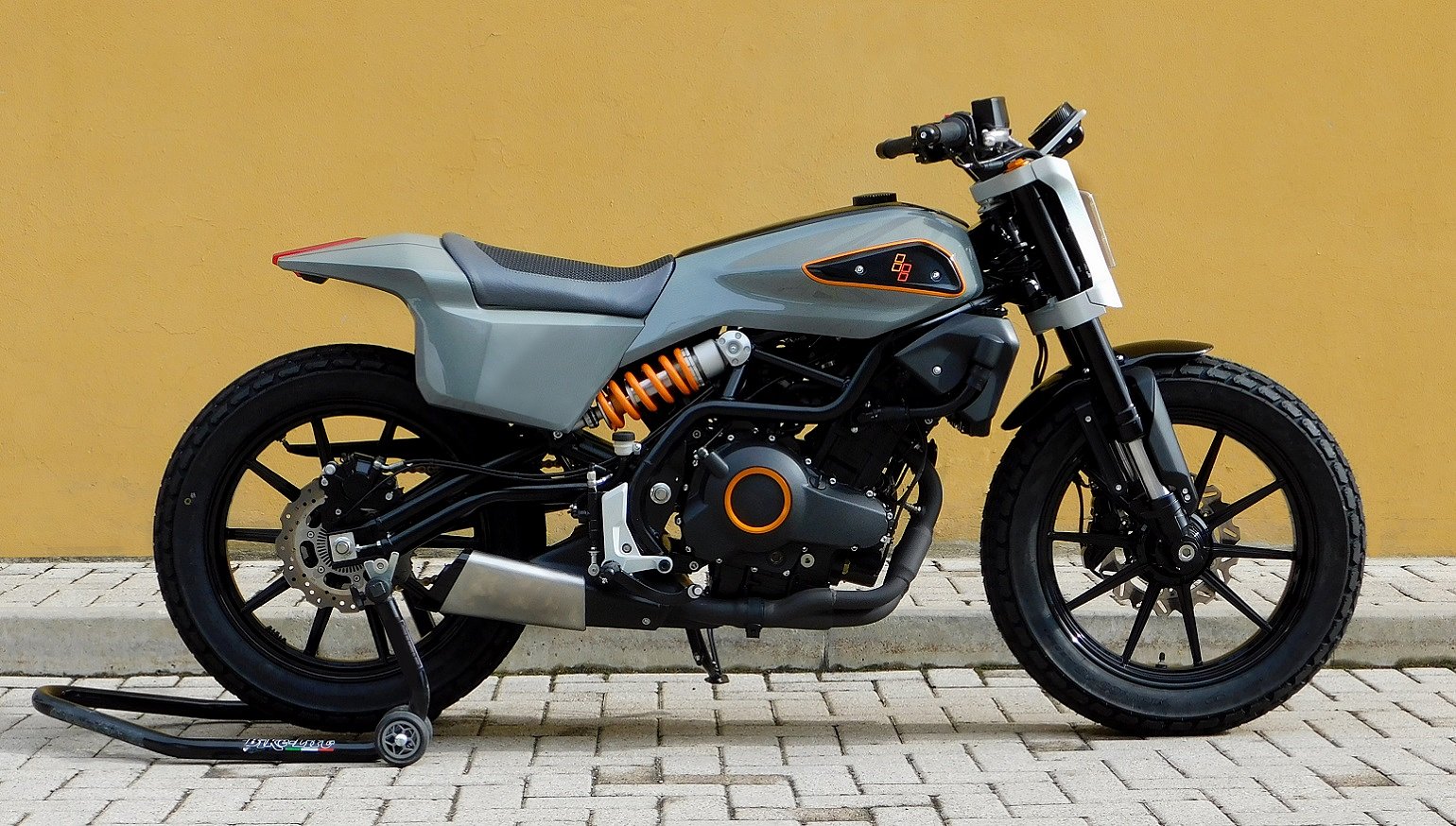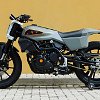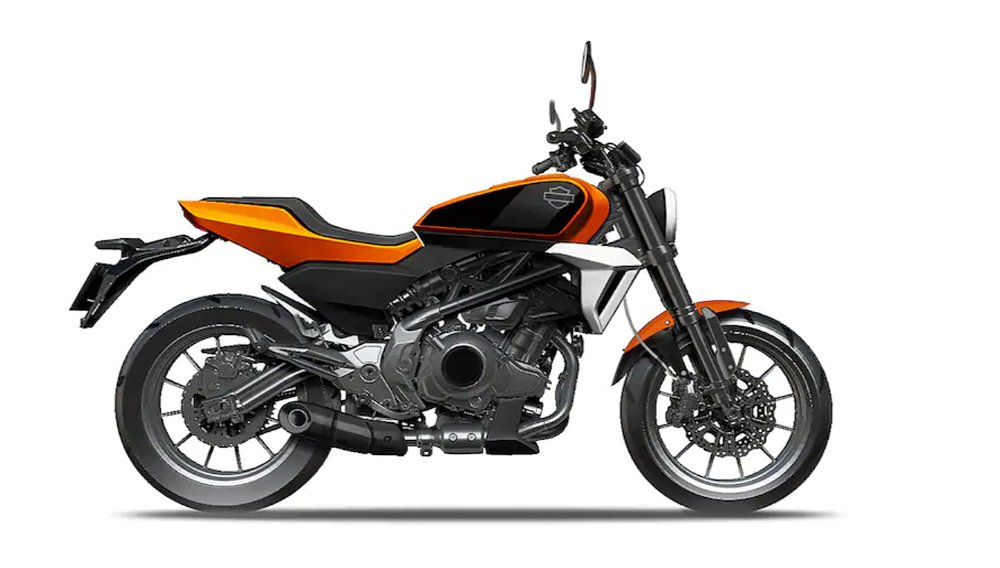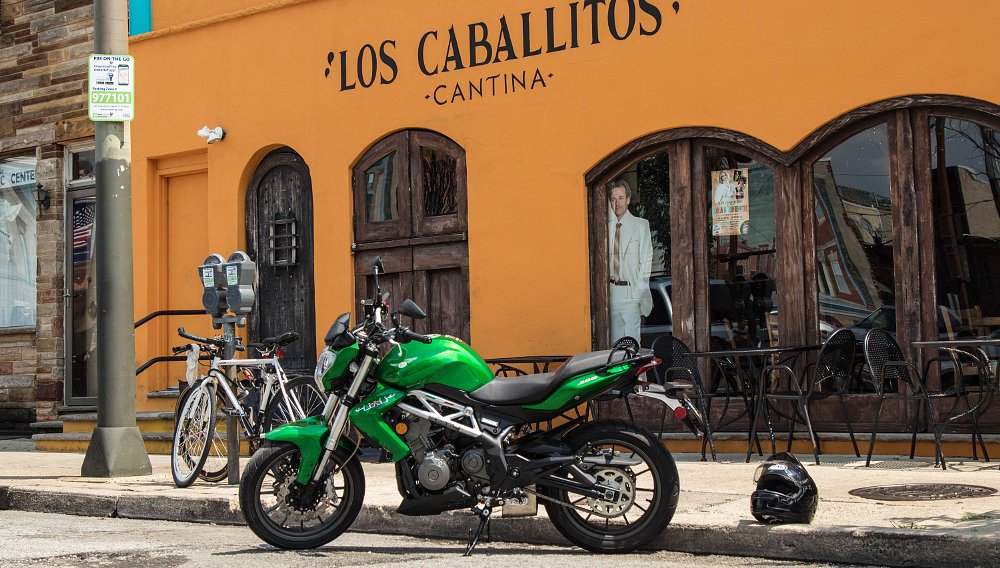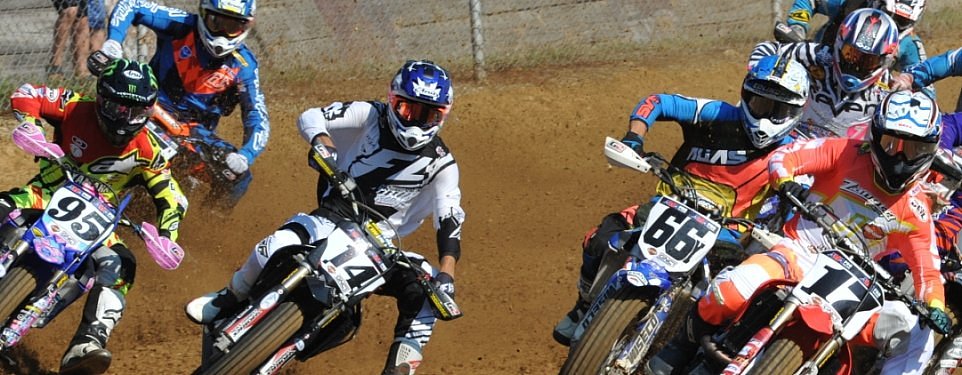A couple of months ago, a friend (and fellow Canuck) Michael Uhlarik cc’d me on a press release about a new small motorcycle, the XR338 Street Tracker Concept, created by Engines Engineering.
My first instinct was, “Delete.” My social media feeds are full of vapid Photoshop exercises that fly around the internet whenever some motorcycle blogger needs new content. But Photoshop fantasies are not Uhlarik’s style; he’s of the sculpt-it-in-clay, prototype-it-in-metal old school. And although it took me a while to connect the dots, I eventually remembered that I’d come across Engines Engineering once before.
The first time I heard of the company was back in 2011 when Mahindra entered Danny Webb and Marcel Schrotter in the 125 cc World Championship. Mahindra’s a huge company with a lot of engineering capability, but it had no racing experience to speak of, and starting at the World Championship level seemed daring.
Webb and Schrotter typically finished about mid-pack behind a flock of Aprilias (that was the bike to have, just before the 125 class was replaced by Moto3). What impressed me was that the Mahindra consistently beat KTM’s 125GP bike — and KTM’s a company that knows something about building small, powerful two-strokes!
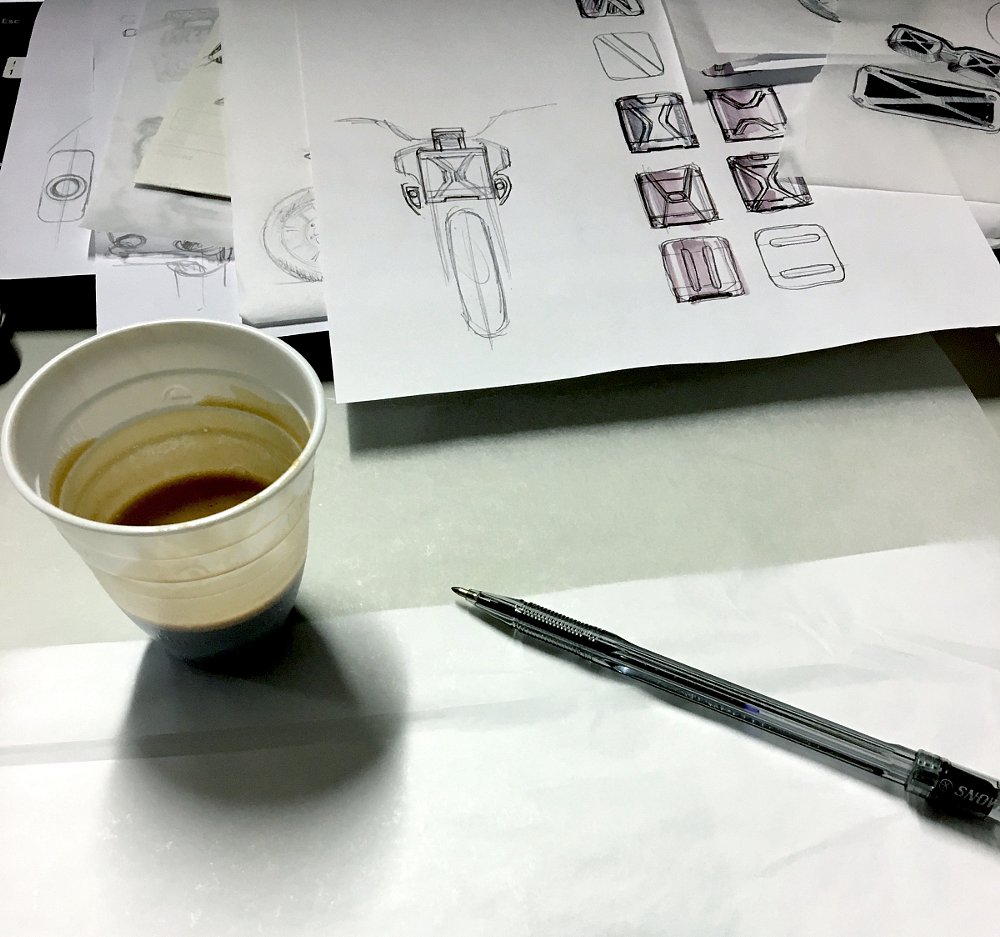
When I dug into it, I learned that the only Indian content in the Mahindras were the Rupees. Those motorcycles had been built completely from scratch in Bologna by a company called... Engines Engineering. I thought, “Those guys must have some real moto chops,” but then I saw a squirrel, so I never followed up, until my curiosity was piqued again.
I recently asked Uhlarik set up a Zoom three-way with EE’s 71-year-old founder, Alberto Strazzari.
Born in Italy’s “Motor Valley”
“Bologna is in the middle of Italy’s ‘Motor Valley’,” Strazzari explained. “I studied engineering at the University of Bologna, which is the oldest university in the world.”
Bologna’s status as an engineering hub dates back to Roman times, when the university there was a major center for hydraulic studies. Later, silk looms were manufactured there; those machines required precise fabrication. Beginning in the 20th century, the so-called Motor Valley runs roughly from Modena to Rimini.
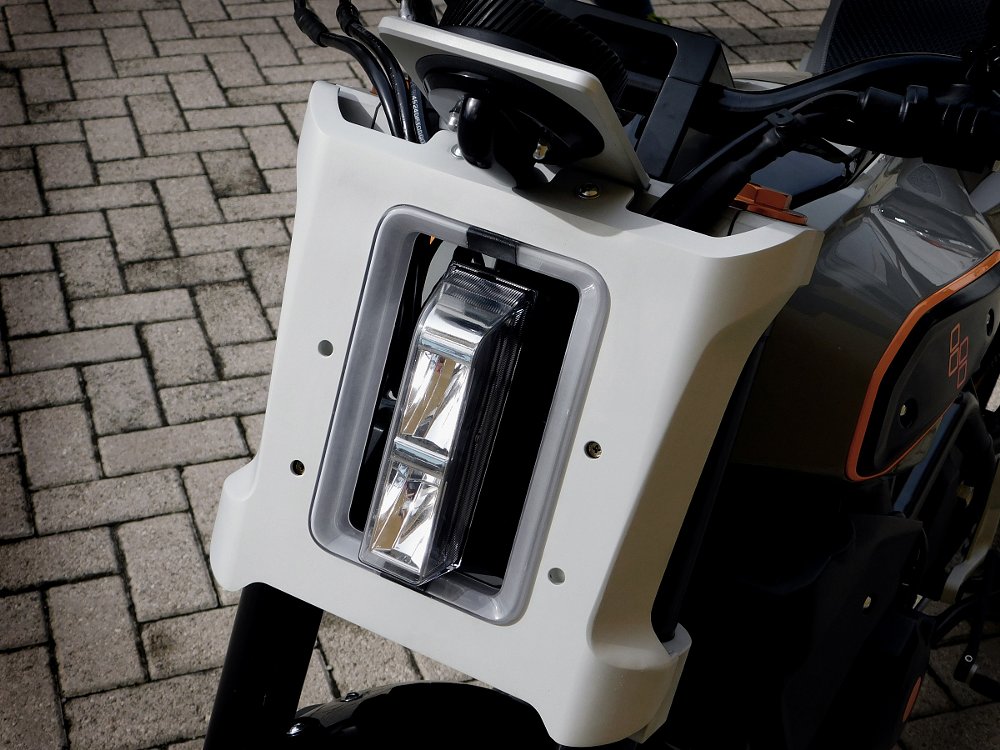
“After my engineering studies, I worked for years in a company that was making engines for motorcycles,” Strazzari continued. “But I was passionate about styling, and chassis and everything. So I decided to establish my own company in 1979.” It began as a three-person company and has now grown to more than 100 employees.
Strazzari explained that over more than 40 years, his company designed scores of motorcycles and scooters for Honda, Yamaha, Ducati, Benelli, Moto Morini and Suzuki as well as numerous Indian and Chinese manufacturers. He was a little evasive when I asked him about specific models. He was free to speak about the 2018 Suzuki Katana, which began life as an Engines Engineering design exercise, because the whole story had been sponsored by and published in the Italian motorcycle magazine Motociclismo. (There was some symmetry in that, because the first Katana originated as a concept bike, sponsored by the German magazine Das Motorrad and designed by Hans Muth, another hired gun like Strazzari.)
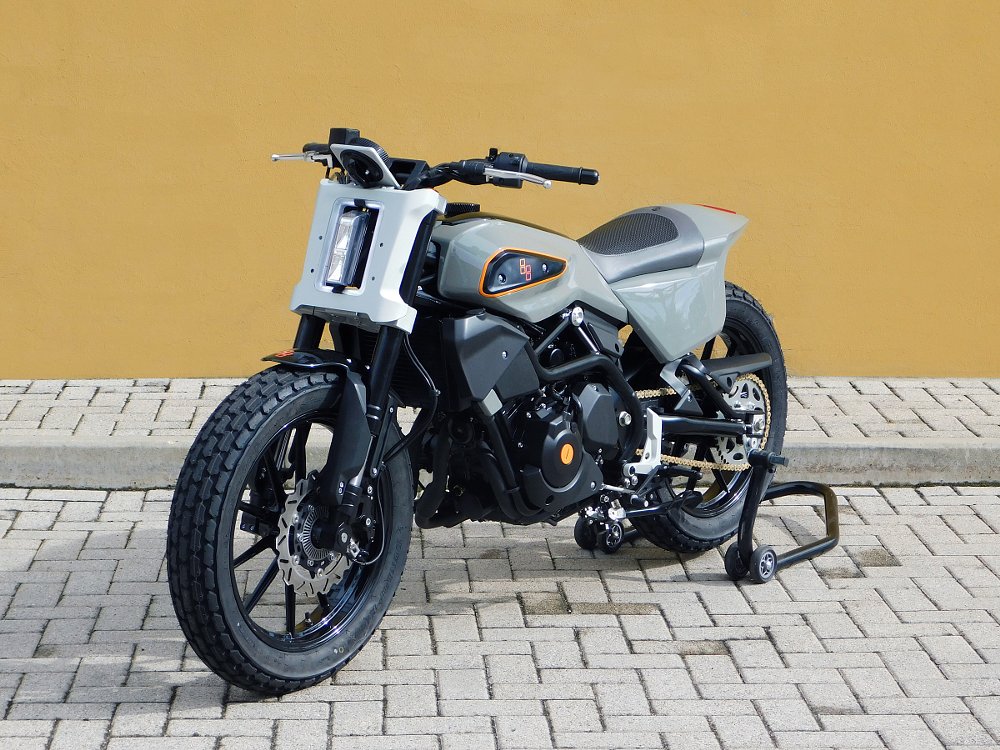
Coming to America
One region that hasn’t yielded much design business in the last 40 years has been North America.
“I must say that we had a very good experience with Harley-Davidson when we managed the the 750 Street project,” Strazzari told me. “It was really a very good project from the relationship point of view. I visited Harley a year later, but I realized that if you don't have someone who can keep up a daily relationship, it’s difficult to work with Harley.”
Strazzari thought it was time to raise his company’s profile in North America. He saw potential with big OEMs like Harley-Davidson and Polaris in the United States and Italika in Mexico; small ones like Zero and Damon; even once-and-perhaps-future motorcycle makers like Bombardier. But based on his experience with H-D, he knew he needed boots on the ground in the market.
Strazzari remembered Michael Uhlarik. The Canadian had used Engine Engineering’s clay studio decades earlier, when he was a product planner working for Yamaha Motor Europe. Strazzari knew him as an Italian speaker who had returned to North America and had a good feel for the U.S. market.
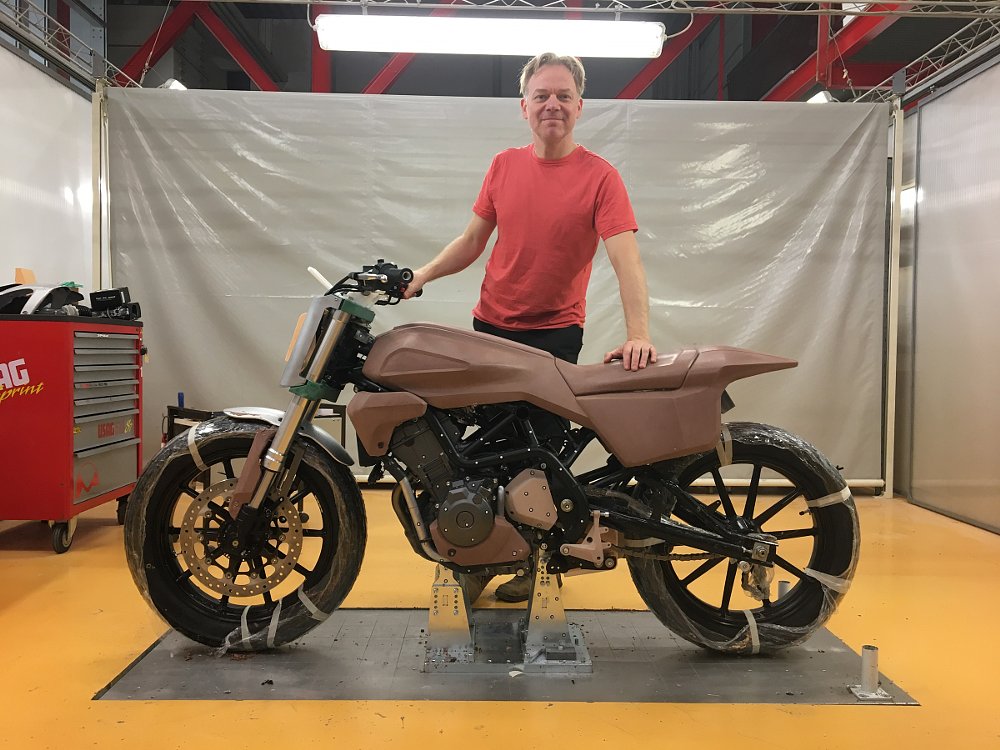
The two brainstormed ways to raise Engines Engineering’s profile with North American OEMs. They decided that The Quail Motorcycle Gathering — celebrating the 50th anniversary of the Harley-Davidson XR750 in 2020 — would be a perfect place to show off a cool, affordable street tracker.
The catch: The Quail was just a few months away and such a motorcycle didn’t yet exist.
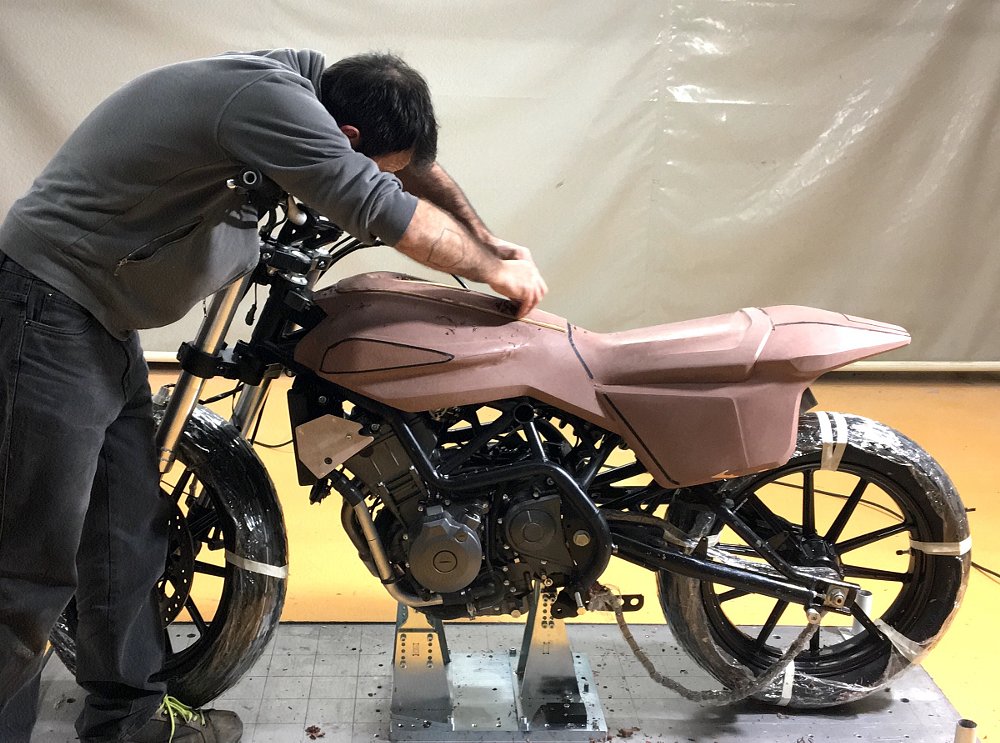
From zero to finished motorcycle in 120 days
“We knew there would be a bunch of hand-built, 'homage' projects, but I said, ‘Let’s not do a concept,’” Michael recalled. “Let’s show a motorcycle that’s production-ready.”
After getting the green light from Strazzari in December, Uhlarik flew from Nova Scotia to Bologna in January and installed himself in EE’s clay studio. They decided to build a working prototype around the 300 cc “Benelli” (read: Qianjiang) four-stroke parallel twin because the motor was readily available in quantity and Harley-Davidson already has a working relationship with Qianjiang.
They bought a Benelli 302S, and under the supervision of Chief Engineer Daniele Alvisi, EE staff took it apart and reverse-engineered motor mounting points. The bodywork and frame, including bespoke LED lighting, instruments, fuel system and wheels were designed and prototyped, and all necessary cycle parts were sourced by EE’s staff (which numbers about 100 people).
“We literally went from nothing to a finished motorcycle in 120 days,” Uhlarik told me.
It’s way more than a concept bike. Although only few XR338s have been made, they’re working prototypes that have already been track- and road-tested. The lighting, induction, and exhaust systems already meet Euro 5, DOT and CARB standards. Engines Engineering describes it as 70 percent production-ready.
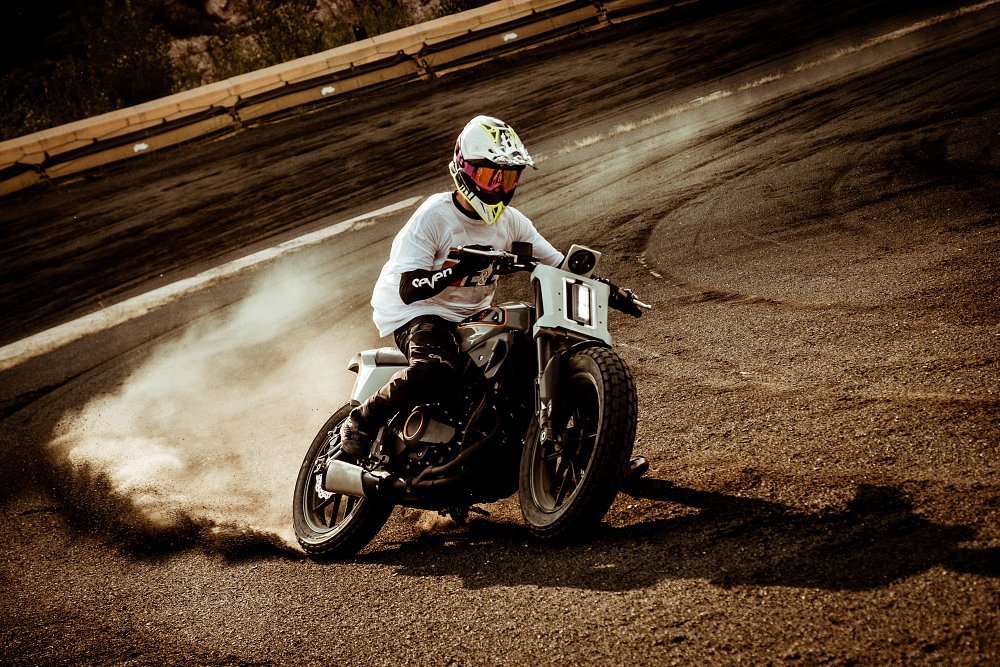
“So what that means, is that what's left is tooling design, locating suppliers, downloading the components to the suppliers and doing test runs to make sure that when the parts come back that they work,” Michael explained. “If a manufacturer decided to buy this project, it could be in stores everywhere in six months.”
Of course, I’ve long been aware of OEMs that outsource the development of so-called “factory” race bikes. But until talking to Michael and Alberto, I had no idea that many production models also begin life in independent engineering firms. One reason is that a small, dedicated team like Engines Engineering can get from a clean sheet to a prototype in far less time and with lower cost than most OEMs can do it.
Strazzari didn’t get specific as far as pricing goes, but he was willing to talk to me about the company’s business model. Most of Engines Engineering revenues come from projects like the XR338, in which the company fully develops a concept to the production-ready stage and then sells all that intellectual property outright. Strazzari told me that EE never licenses its designs. They’re all buyouts.
The cost of any design depends on its complexity and the specific deliverables in the contract. For example, are there three prototypes, or 10? But Alberto told me that his company has gross revenues of €11-12 million and does three to four projects like the XR338 per year. Although not every project finds a buyer, most do. A back-of-the-envelope calculation suggests that the rights to the XR338 would command a price in the low seven figures.
Obviously, there’s some risk associated with building complete bikes with no assurance they’ll find a buyer. In order to hedge those bets, Engines Engineering also offers some specific engineering capabilities that it will piece out to other manufacturers. For example, the company has cold-soaking and rain-simulation chambers, it does acoustic and emissions testing, and it subcontracts out its test riders, who do about 400,000 kilometers of track and road testing per year. No, I don’t know if they’re hiring, but if they are you’ll find out when I start filing more stories from Bologna!
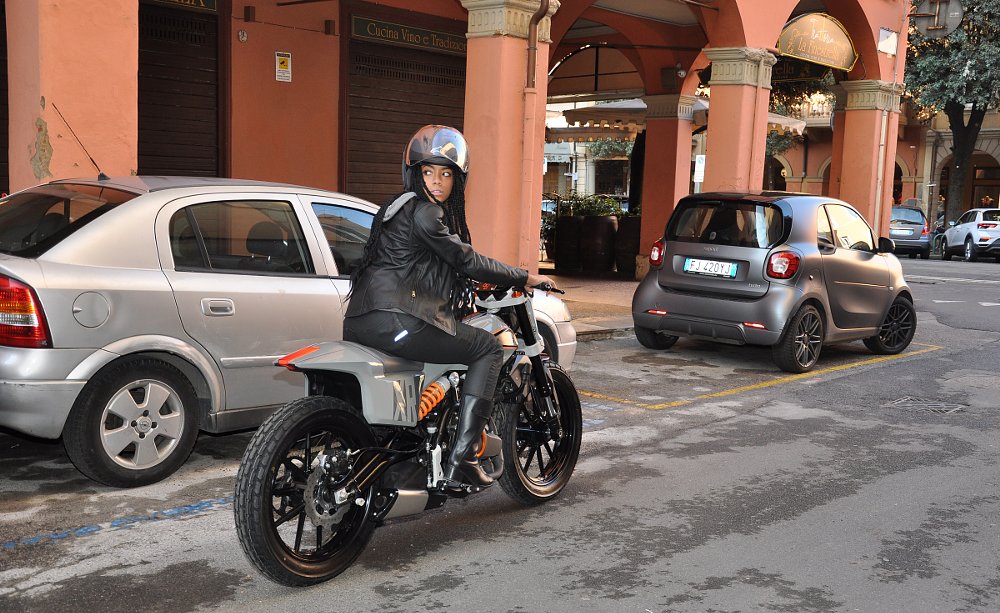
XR338 versus COVID-19
The plan to display the XR338 at The Quail Motorcycle Gathering collapsed when the concours, which is typically held in mid-May, was canceled. Uhlarik barely got out before all international flights from Milan were grounded in March. Luckily, he made it back to Nova Scotia, one of the four Canadian Maritime provinces that have managed to create their own quarantine bubble and virtually eliminated community transmission of the coronavirus. With a population of just under a million, the province is averaging about 10 new cases per day as I write this, so it’s a great place to wait out the pandemic.
The plan now is for Uhlarik to tour North America with the XR338 prototype as soon as it’s safe to do so — hopefully summer, 2021. Since I now live in Harley’s home town, I’ll probably get a chance to ride it on what I presume will be the XR338 tour’s first stop!
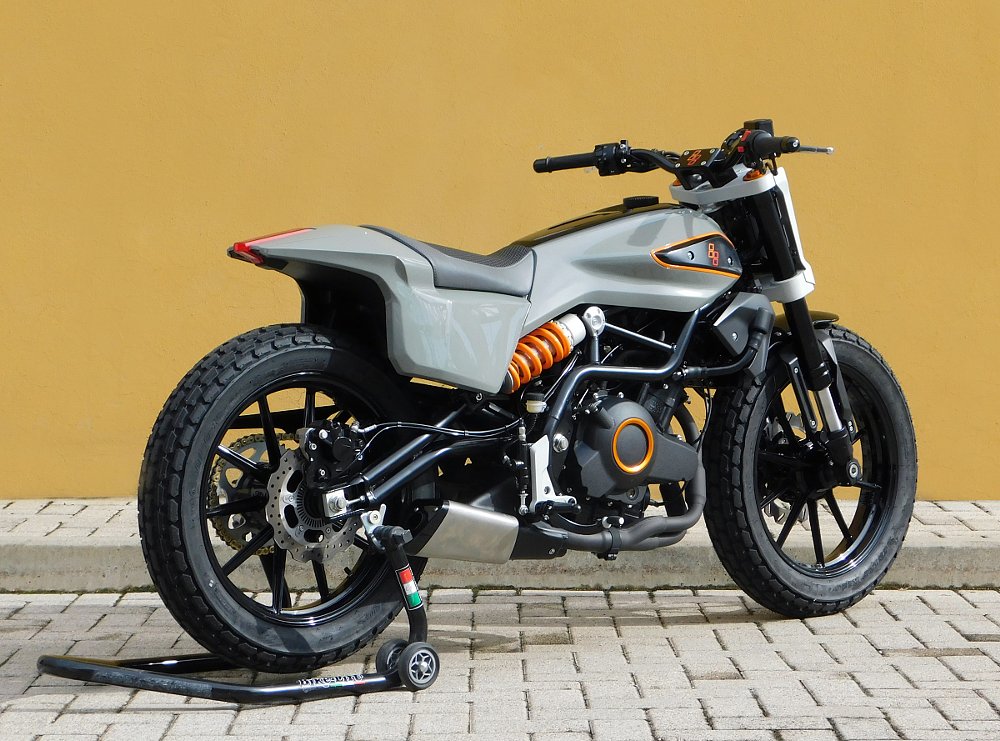
Obviously, Engines Engineering’s first choice is to sell the design to a North American OEM that would produce it, either powered by an internal combustion engine as the prototype is, or as an EV. If no North American company bites, it could be sold to an Asian or European OEM of course. And even if it never enters production it might still serve the larger purpose of raising EE’s profile here.
Strazzari and Uhlarik are sanguine about the state of the U.S. motorcycle industry, but they still believe that a cool, small, sub-$5,000 motorcycle would find a market here. What do you think? If someone made it, would it sell?




